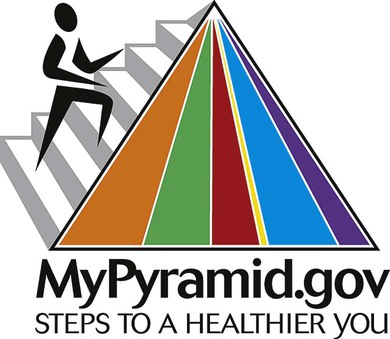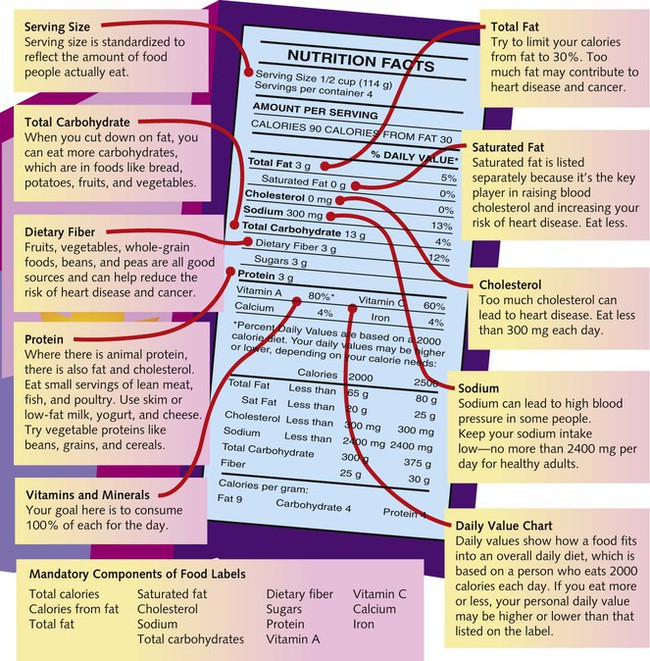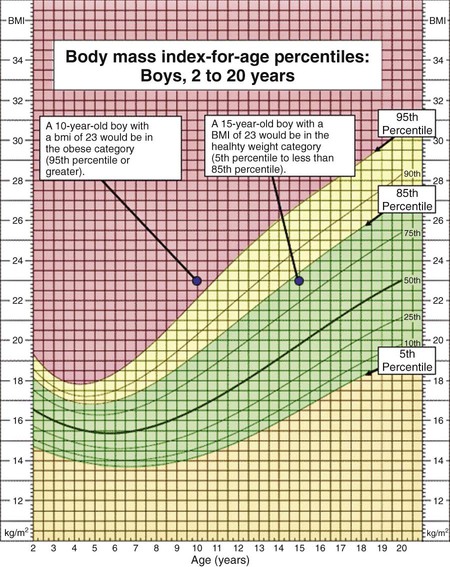Chapter 8 Wellness may be defined as a state of health on a continuum from a level of high energy and feeling of well-being to illness or death. Optimal wellness reflects a balanced relationship among the individual’s physical, mental, and social health. Wellness is determined by the lifestyle choices a person makes. These choices include the amount of sleep, type of diet, exercise plan, personal habits, social relationships with others, and so forth. Many models have been designed to describe the type of lifestyle and personal habits that promote wellness, interrelating the body, mind, and spirit (Fig. 8-1). The body refers to physical health and development. The mind refers to intellectual and emotional development. The spirit includes inner and personal reflection. Tertiary prevention includes the steps taken to minimize the disease when primary and secondary prevention have failed. It is designed to limit disability and rehabilitate the individual with disease. An example of tertiary prevention is the monitoring of medication and therapy in someone who has suffered a heart attack (Box 8-1). Since May 1994 all producers of processed foods have been required to comply with the Nutrition Labeling and Education Act. Labels on foods must be consistent and meet guidelines set by the U.S. Food and Drug Administration (FDA). Figure 8-2 lists the contents of processed food that must appear on the label. Additionally, foods that make health claims such as “low in …,” “good source of …,” or “lean” must meet specific guidelines for these statements, and claims can be made in only seven categories. Minerals are simple compounds that regulate body processes. Nineteen minerals are used by the body. Seventeen are considered to be essential (see Appendix: Vitamins and Minerals on Evolve). Minerals are found in many food sources. Ten times the recommended daily allowance of vitamins and minerals is considered to be an overdose, or megadose (Table 8-1). TABLE 8-1 Effects of Vitamin and Mineral Megadosing *Physiological dependency has occurred when the dosage is reduced to normal levels and symptoms of deficiency appear. In June 2005 the USDA replaced the food group pyramid designed to help plan meals that provide all of the nutrients needed in a daily diet (Fig. 8-3). The new pyramid, called MyPyramid, provides an opportunity to personalize the plan for healthy eating and exercise. A healthy diet includes all of the recommended food groups to provide all of the required nutrients. The food groups include milk, meats and beans, vegetables, fruits, and grains. Servings of oils are not considered a food group because they contain calories but no nutrients. Additionally, they are found in a natural form in many other foods. The new pyramid uses a symbol that includes all of the parts of healthy eating and physical activity. It includes activity, moderation, personalization, proportionality, variety, and gradual improvement. The pyramid calculates dietary information on the basis of age, gender, and levels of activity (Table 8-2). The plan includes tips to improve nutrition such as including calcium-rich foods, choosing lean proteins, varying vegetable selections, choosing whole grains, and focusing on fruits and physical activity. The flexibility of the plan provides alternatives to meet dietary needs due to religious, cultural, or health preferences. TABLE 8-2 Another method used to measure the amount of food necessary to perform the body functions is counting calories. A calorie is the measurement of the amount of energy needed to raise 1 g of water 1° C. The amount of calories necessary daily depends on gender, age, size, general condition, and daily activity. In general, the caloric need can be estimated by multiplying the desired weight in pounds by 15 calories per pound per day (Box 8-2). A balanced diet provides 15% of the calories from protein sources. Fat sources should provide 30% of the daily calories, with the remaining 55% provided by carbohydrates. Body mass index (BMI) is a number that is calculated using a person’s weight and height. It indicates the amount of body fat and is used to screen for health problems. Although it does not measure the amount of fat directly, the results have been shown to correlate with measurements made using techniques like measuring skinfold thickness with callipers and hydrostatic (underwater) weighing. The BMI for adults (20 years or older) is calculated using a standard formula for men and women (Box 8-3). For children and teens under 20 years of age, the BMI is specific for age and gender. This is because the amount of fat changes with age and differs between girls and boys during growth years. The BMI status in children and teens is considered a screening tool, not a diagnostic tool. The CDC provides BMI-for-age growth or status charts for use with children and teens (Box 8-4). Weight can be regulated by counting calories. One pound (0.45 kg) of fat tissue is the equivalent of 3500 calories. Carbohydrates and protein provide 4 calories per gram. Fat provides 9 calories per gram. Vitamins and minerals do not contain any calories. Fad diets that limit the variety of foods eaten usually do not work on a permanent basis. One reason that quick weight loss is unsuccessful is that the body, when deprived of the essential nutrients, stores additional energy in the form of fat. Controlling weight results from balancing the number of calories taken in and the number of calories used as energy. The most successful method of weight loss is a gradual increase in caloric output by additional exercise and a decrease in the caloric intake of food. Weight loss of 1 to 2 pounds per week is considered safe and effective (Fig. 8-4). Special diets are used to treat specific health conditions (Table 8-3). In addition to providing a balanced diet with adequate calories, the needs of special populations must be considered. Food habits are influenced by nationality, race, culture, religious beliefs, and personal preferences. Special diets must consider these factors, as well as nutrient requirements. The Dietary Guidelines for Americans (USDA, 2005) provide guidelines for older adults. A list of warning signs has been developed as a nutritional health checklist using the word DETERMINE (Box 8-5). TABLE 8-3
Wellness, Growth, and Development
 Define at least 10 terms relating to wellness, growth, and development.
Define at least 10 terms relating to wellness, growth, and development.
 List at least three factors that may be used to determine a level of wellness.
List at least three factors that may be used to determine a level of wellness.
 Describe three categories of disease prevention.
Describe three categories of disease prevention.
 List the function of each of the five nutrients.
List the function of each of the five nutrients.
 Construct a personalized U.S. Department of Agriculture (USDA) food pyramid and number of recommended daily servings for each category.
Construct a personalized U.S. Department of Agriculture (USDA) food pyramid and number of recommended daily servings for each category.
 Describe the relationship of calories to weight loss and gain.
Describe the relationship of calories to weight loss and gain.
 Describe at least five types of therapeutic diets used to meet individual nutritional needs.
Describe at least five types of therapeutic diets used to meet individual nutritional needs.
 Identify at least five events that may lead to a reaction of stress.
Identify at least five events that may lead to a reaction of stress.
 Describe at least five health conditions that may result from stress.
Describe at least five health conditions that may result from stress.
 Describe at least four methods that may be used to manage stress.
Describe at least four methods that may be used to manage stress.
 Compare the physical development of the body through the life span.
Compare the physical development of the body through the life span.
 Describe the psychosocial development through the life span.
Describe the psychosocial development through the life span.
 Describe two models of change theory that may be applied to health care behavior.
Describe two models of change theory that may be applied to health care behavior.
 Describe each of the five stages of death acceptance (grief).
Describe each of the five stages of death acceptance (grief).
Wellness
Prevention
Nutrition
Nutrients
Vitamin or Mineral
Effect of Megadose
Vitamin A
Blurred vision, hearing loss, liver damage, headache
Vitamin B6
Physiological dependency*
Vitamin C
Physiological dependency, kidney stones
Calcium
Drowsiness, impaired absorption of other minerals and vitamins
Iron
Toxic buildup in liver, pancreas, and heart
Zinc
Nausea, vomiting, premature birth, stillbirth
Food Groups

Category
Individual 1
Individual 2
Individual 3
Age
16
16
16
Gender
Female
Female
Male
Physical activity*
<30 min daily
30-60 min daily
30-60 min daily
Grains
6 oz
6 oz
10 oz
Vegetables
2.5 cups
2.5 cups
3.5 cups
Fruits
1.5 cups
2 cups
2.5 cups
Milk
3 cups
3 cups
3 cups
Meat and beans
5 oz
5.5 oz
7 oz
Oils and discretionary calories
5 tsp (limit fats and sugars to 195 calories)
6 tsp (limit fats and sugars to 265 calories)
8 tsp (limit fats and sugars to 425 calories)

Calories
Diet Therapy
Diet
Description
Use
Clear liquid
Minimal residue, dissolved sugar
Postsurgical, replace lost fluid
Full liquid
Strained, semiliquid, clear liquid
Progression to regular diet, digestive system upset
Soft
Chopped, strained, pureed, little fiber
Inability to chew, difficulty swallowing
Regular
No restrictions
Low calorie
800-2000 calories
Overweight, arthritis, cardiac condition
High calorie
More than 2000 calories
Anorexia nervosa, hyperthyroidism, underweight
Bland
No highly seasoned foods, low fiber
Ulcer, colitis
Low sodium
No salt added on tray
Kidney disease, cardiovascular disorder, edema, hypertension
Restricted residue
Low in bulk, low fiber
Rectal disease, colitis, ileitis
Low carbohydrate
Sweets not allowed
Diabetes
Low cholesterol
Restricted saturated fat
Coronary disease, atherosclerosis
Low fat
High carbohydrates, low protein
Gallbladder disease, obesity, heart condition, liver disease
Lactose free
Lactose-free milk products, nondairy creamer, soy milk
Alactasia
High protein
Low carbohydrate, high protein
Pregnancy, postsurgical, children in growing years, burn victims
Diet substitutes
IV therapy, tube feeding
Dehydration, anorexia, poor nutrition, unconsciousness
Force fluids
Offer 8 oz of liquid every hour
Elderly, dehydration
Kosher
Separate utensils for meat and milk products
Observation of Jewish tradition ![]()
Stay updated, free articles. Join our Telegram channel

Full access? Get Clinical Tree


Wellness, Growth, and Development
Get Clinical Tree app for offline access












